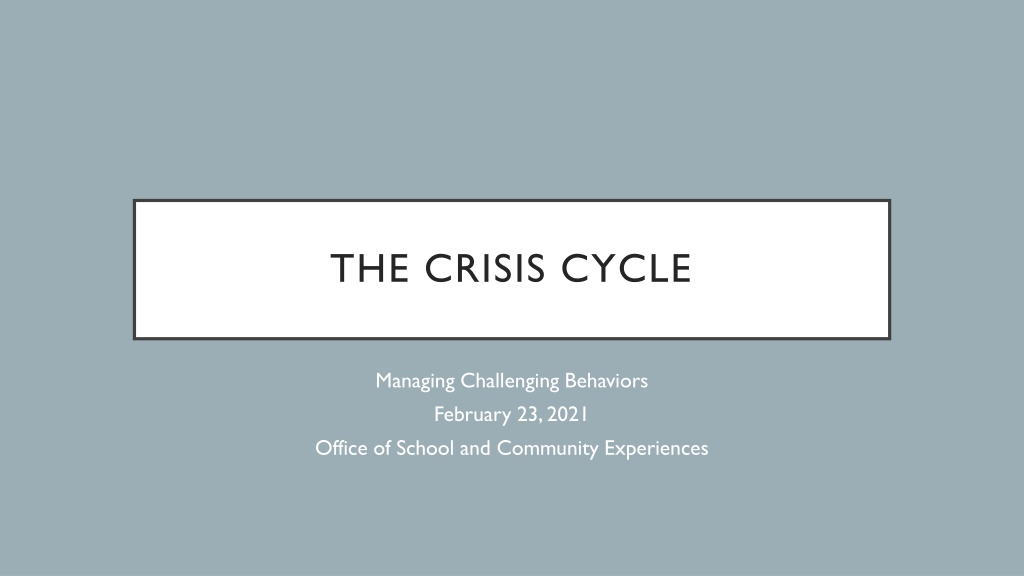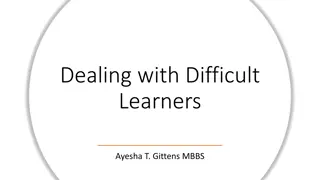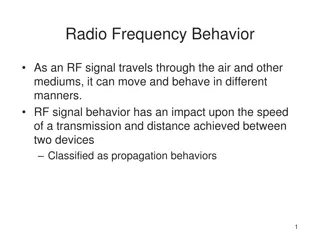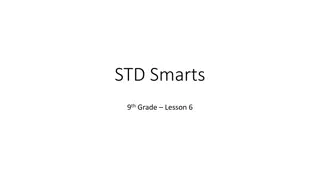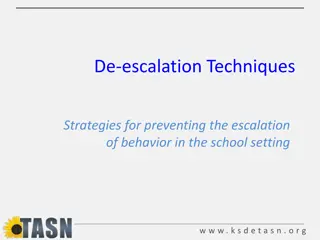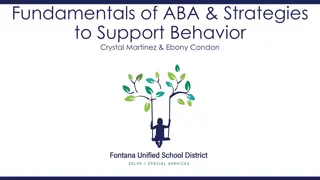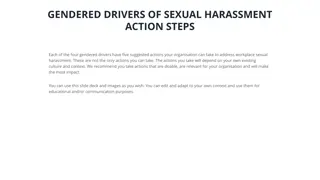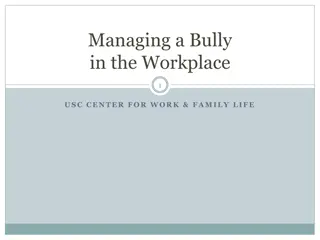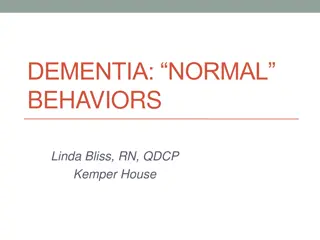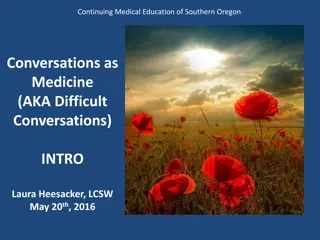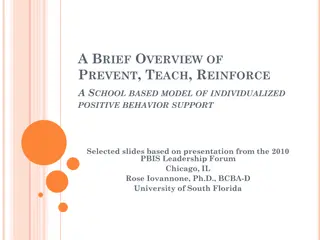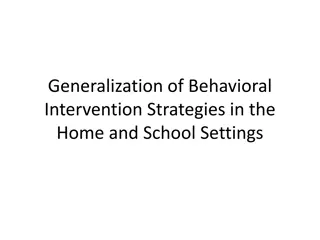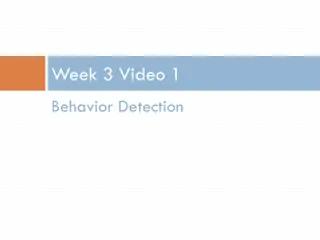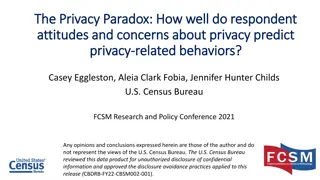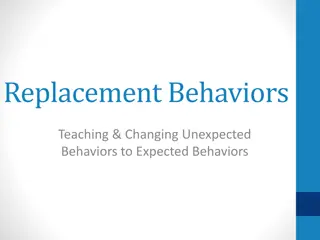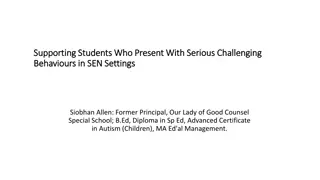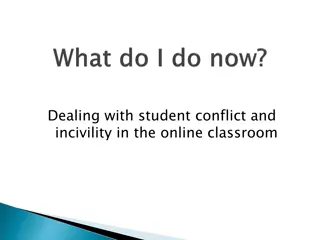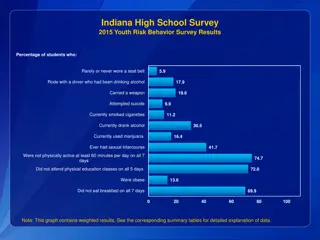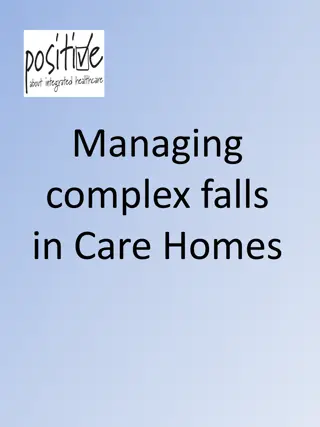Strategies for Managing Challenging Behaviors in Educational Settings
Explore effective strategies for managing challenging behaviors in schools, focusing on the crisis cycle, pyramid model of behavior support, and phases of the crisis cycle. Learn about proactive interventions, understanding students' needs, and promoting a calm learning environment to enhance behavioral outcomes.
Download Presentation

Please find below an Image/Link to download the presentation.
The content on the website is provided AS IS for your information and personal use only. It may not be sold, licensed, or shared on other websites without obtaining consent from the author. Download presentation by click this link. If you encounter any issues during the download, it is possible that the publisher has removed the file from their server.
E N D
Presentation Transcript
THE CRISIS CYCLE Managing Challenging Behaviors February 23, 2021 Office of School and Community Experiences
AGENDA Pyramid model of supports Students who engage in challenging behavior The crisis cycle
PYRAMID MODEL OF BEHAVIOR SUPPORT
STUDENTS WHO ENGAGE IN CHALLENGING BEHAVIOR Mental health Simple changes in routines Trauma Special education (emotional disability, behavior intervention plans, sensory needs) BEHAVIOR IS A FORM OF COMMUNICATION (attention, escape, access to tangibles, sensory)
COLVIN: PHASES OF THE CRISIS CYCLE Calm Triggers Agitation Acceleration Peak De-escalation Recovery
CRISIS CYCLE Peak Acceleration Intensity De-escalation Agitation Trigger Recovery Calm Time Colvin, 2004
CALM On task Following rules Responsive Goal-oriented Able to handle all kinds of work (group, independent, interactive, etc.)
DURING CALM Optimal time to proactively intervene Reiterate expectations and responsibilities High amounts of feedback both positive and corrective Time to teach new skills or introduce new content Student will be receptive to trying new things
PROACTIVE STRATEGIES FOR MAINTAINING CALM Take care when designing your physical environment. Establish and post a schedule. Establish classroom expectations. Establish classroom routines (arrival/departure, lining up, asking permission, getting materials, etc.).
PHASES OF ACTING OUT BEHAVIOR Peak Acceleration Intensity De-escalation Agitation Trigger Recovery Calm Time Colvin, 2004
TRIGGERING EVENT Student perceives they are not getting something they need Repeated errors and corrections (frustration) Provocation Sleep deprivation Change in routine COVID-related struggles
TRIGGERING EVENT You may or may not know what it is, but there is always an event that sets off the cycle. Behaviors do not just come out of nowhere. Your goal is to maintain a safe and productive classroom, so continue using universal management techniques.
UNIVERSAL TECHNIQUES Proximity control Descriptive praise Humor Hurdle help
PHASES OF ACTING OUT BEHAVIOR Peak Acceleration Intensity De-escalation Agitation Trigger Recovery Calm Time Colvin, 2004
AGITATION Darting eyes Non-conversational language (rambling, no give-and-take) Withdrawl Fidgeting Refusing to participate/engage
DURING AGITATION Focus on reducing anxiety -provide empathy, acknowledge feelings -give hurdle help Be polite and non-threatening -use care with body language, voice, tone, proximity Allow student to cool down, walk away for a moment
PHASES OF ACTING OUT BEHAVIOR Peak Acceleration Intensity De-escalation Agitation Trigger Recovery Calm Time Colvin 2004
ACCELERATION Questions Argues Non-compliant/disrespectful Defiant Whining/complaining Threatening language Verbal abuse
DURING ACCELERATION At this point, escalation is very likely to continue Don t take it personally Don t get drawn in Avoid escalating words like, You need to Disengage if necessary ( Let s take a break and go get a drink of water. Meet me back here in two minutes. )
TIPS FOR MANAGING ACCELERATION Maintain calmness, respect, and detachment Keep your behavior extremely controlled and non-threatening Slow, quiet, eye level, stillness Avoid power struggles at all costs Terminate the interaction if behavior does not de-escalate
PHASES OF ACTING OUT BEHAVIOR Peak Acceleration Intensity De-escalation Agitation Trigger Recovery Calm Time Colvin, 2004
PEAK Property destruction Assault Severe tantrum Self-abuse Hyperventilation, uncontrolled crying Elopement
DURING PEAK Focus on safety (evacuate classroom, if necessary) Be quiet Wait Remember, students cannot really hear you during this phase.
PHASES OF ACTING OUT BEHAVIOR Peak Acceleration Intensity De-escalation Agitation Trigger Recovery Calm Time Colvin, 2004
DE-ESCALATION Confusion Denial Embarrassment Withdrawl
DURING DE-ESCALATION Avoid excess attention Allow privacy Don t ask for an apology Emphasize starting anew Use words like: maybe, perhaps, sometimes, what if, I wonder if .
PHASES OF ACTING OUT BEHAVIOR Peak Acceleration Intensity De-escalation Agitation Trigger Recovery Calm Time Colvin, 2004
RECOVERY Defensiveness Subdued behavior May want to be alone/isolate Desire to work independently
DURING RECOVERY Reinforce attempts at meeting expectations Once calm, follow through with any consequences, if any are assigned ( You will have to clean up the things that you broke. You will need to see what you can do to make that better. You will have a detention on Tuesday. )
PHASES OF ACTING OUT BEHAVIOR Peak Acceleration Intensity De-escalation Agitation Trigger Recovery Calm Time Colvin, 2004
DEBRIEF What happened? Why did it happen? What could you have done instead? Consider a Practice/Role-Play
TIMES TO INTERVENE Peak Acceleration Intensity De-escalation Agitation Trigger Recovery Calm Time Colvin, 2004
TRIGGERS A trigger is anything a student does or says that causes you to have an emotional response. It is important to be aware of your own triggers. Consider what gets you angry or frustrated. Even when confronted with students who exhibit the behaviors that bother you most, it is important to stay outwardly calm and maintain a professional perspective. It s not your anger/frustration that will get you into trouble, but how you act on that anger that might.
KEEP YOUR COOL Take a deep breath, take a step back. Count to five (silently), take a sip of water. Self-talk OK, now I have to REMEMBER .It s ok to tap out if you are not in control of your emotions.
THE FOUR QUESTIONS (TCI) What am I feeling now? What does this student feel, need or want? How is the environment affecting the young person? How do I best respond?
